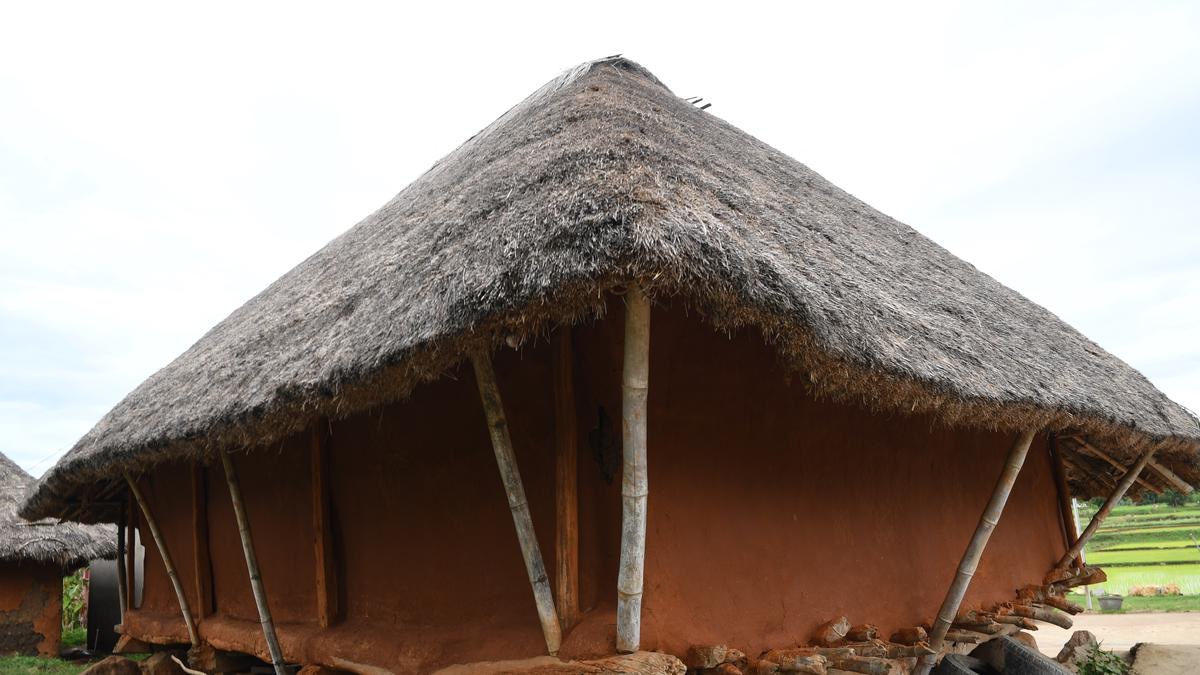Description

Disclaimer: Copyright infringement not intended.
Context
The history, lifestyle, and evolution of the Malaiyali tribe, a community that inhabited the picturesque Yelagiri hill in northern Tamil Nadu, India, over two centuries ago.
Details
- Over 200 people of Malaiyali tribe settled on Yelagiri hill in northern Tamil Nadu, building traditional clay huts that served as a comprehensive system for shelter, storage, farming, and cattle.
Evolution of the Malaiyali Tribe's Lifestyle
- The Malaiyali tribe, derived from "malai" (hill) and "yali" (people), inhabited Tamil Nadu's hilly regions as foragers.
- They settled in Yelagiri's upper Nillavur region, transitioning from makeshift huts to permanent structures made of red loam clay.
- Simple one-room huts, measuring 16 by 22 feet, were constructed using red clay and teak wood frames.
The Significance of Red Clay and Hut Construction
- Red clay played a crucial role in the tribe's life cycle, used for hut construction and burial rituals.
- Govinthasamy, a tribesman and former panchayat member, owns and maintains the last remaining traditional hut.
- The hut is constructed with a teak wood frame covered with red clay, featuring a distinctive four-foot-tall entrance.

The Quaint Design and Functionality of the Hut
- The hut's 12-foot thatched roof, made of dry bamboo leaves and cow dung, prevents leaks during monsoons.
- Despite its deceivingly small exterior, the hut accommodates eight people and includes an attic (paran) for storage.
- Originally built for living, it later served as a seed storage space after harvest.
Innovative Construction Techniques
- The hut stands on teak wood stilts, elevating it two feet above the ground to prevent flooding and rodent intrusion.
- Traditional cooking practices took place in nearby huts, while this hut was used for living and storage.
Cultural and Agricultural Significance
- The single-room structure exemplified the tribe's close connection to agriculture; grains were stored in dedicated spaces.
- Mohan Gandhi, a Tamil professor, highlights the scientific design of the houses and their resilience against weather.
- Stilts provided additional storage and shelter space for grains and poultry.
Nostalgia and Transformation
- The hut's interior now holds remnants of a straw attic and a clay pot.
- Despite the scorching heat, the hut remains cool, sheltering occasional street dogs and hens.
- Govinthasamy retains the hut for cultural preservation and educates tourists about the tribe's history.
Modern Times and Cultural Evolution
- Access to education, employment, and financial resources led the tribe to adopt a modern lifestyle.
- The traditional hut represents a bygone era, showcasing the tribe's ability to adapt to changing times.
|
PRACTICE QUESTION
Q) Discuss the cultural and architectural significance of the traditional clay huts of the Malaiyali tribe on the Yelagiri hill in Tamil Nadu. How did these huts serve as a reflection of the tribe's historical evolution and their close connection to agriculture? (250 words)
|
.jpg)
https://epaper.thehindu.com/ccidist-ws/th/th_delhi/issues/47670/OPS/GS9BK7CVI.1.png?cropFromPage=true











